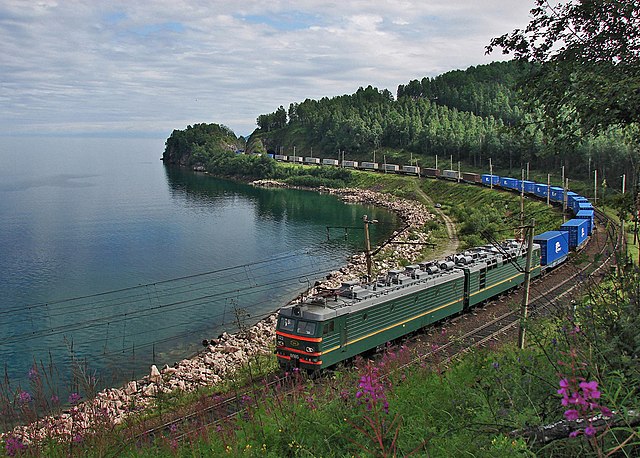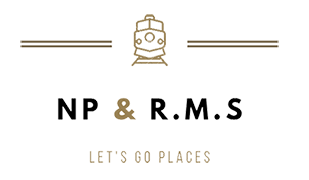The Trans-Siberian Railway, an engineering marvel and a symbol of cross-continental connection spans over 9,000 kilometers across Russia, from Moscow in the west to Vladivostok in the east. This iconic railway, one of the world’s longest and most famous train journeys, traverses diverse landscapes, cultures, and climates, offering travelers a captivating glimpse into the heart of Russia. Whether seeking an adventurous voyage or a means of exploration, the Trans-Siberian Railway promises an unforgettable experience through its vast expanses, historic cities, and the ever-changing tapestry of scenery that unfolds outside its windows.
Not only can you travel all throughout Russia, but you can also connect to railways in Mongolia, China, and Kazakhstan.
How Much Do Trans Siberian Tickets Cost?

The cost of Trans-Siberian Railway tickets can vary widely depending on several factors, including the route you choose, the class of accommodation, the time of year, and any additional services you may opt for. The Trans-Siberian Railway consists of different routes, such as the classic Trans-Siberian line from Moscow to Vladivostok, as well as variations like the Trans-Mongolian route that goes through Mongolia and the Trans-Manchurian route that passes through China.
- Third Class (Platskartny): This is an open-plan carriage with bunks, and it’s the most budget-friendly option. Prices can range from around $10 to $50 or more depending on route.
- Second Class (Kupe): This option offers more privacy, with compartments for four people. Prices typically start from around $50 to $150 or more.
- First Class (Spalny Vagon): This is the most comfortable and private option, with compartments for two people and better amenities. Prices can range from approximately a few hundred dollars depending on the route.
If you take international trains to Mongolia or Kazakhstan, it’s a little more expensive and range between $150-$300+ for long distances.
How Safe Is the Trans Siberian Railway?
The Trans-Siberian Railway is generally considered a safe mode of transportation for travelers. However, like any form of travel, there are certain precautions to keep in mind to ensure your safety and comfort during the journey.
It’s better to book 2nd class, or 1st class for best safety and usually the latest train models. The cheaper tickets are not only less comfortable but the overall vibe does not feel as safe.
Also, be sure to sit in the more crowded areas while waiting for the train at the train station. You could encounter scammers in less secluded areas especially if you are a foreigner.
Due to the current situation with Ukraine and Russia, visas could be a little harder to get, but overall the trains are still running and operational like normal. Just make sure to keep your belongings near you.
Where To Book Trans Siberian Tickets
To book Trans-Siberian Railway tickets, you have several options, both online and offline. Here are some recommended methods:
- Official Russian Railways Website (RZD):
The official website of Russian Railways is one of the most reliable sources for booking Trans-Siberian Railway tickets. It provides information on routes, schedules, and availability. You can book tickets directly through their website: https://www.rzd.ru/ - Travel Agencies and Tour Operators:
There are numerous travel agencies and tour operators that specialize in Trans-Siberian Railway travel. They can provide assistance with itinerary planning, ticket booking, and additional services. Look for reputable agencies with positive reviews and a track record of handling such bookings. - Online Booking Platforms:
There are several online platforms that allow you to search for and book Trans-Siberian Railway tickets. Some popular platforms include Real Russia, Russian Trains, and 1520mm. These websites often provide English-language options for easier navigation. - Train Stations and Ticket Offices:
If you’re in Russia, you can also purchase tickets directly at train stations or ticket offices. This option might be more suitable for those who are comfortable with the local language and navigating the process. - Hostels and Accommodation Providers:
Some hostels and guesthouses in major Russian cities, especially those along the Trans-Siberian route, offer ticket booking services for travelers. This can be a convenient way to book tickets while staying in these cities.
When booking Trans-Siberian Railway tickets, consider factors such as the route you want to take, the class of accommodation, the time of year, and any additional services you might need. It’s advisable to book well in advance, especially during peak travel seasons, to secure the tickets that best suit your preferences and schedule. Always ensure you are using reputable sources to avoid potential scams or fraudulent services.
Crossing Mongolian Border

Crossing the Mongolian border with the Trans-Siberian train, particularly on the Trans-Mongolian route, is a significant and exciting part of the journey. Here’s what you can generally expect when crossing the Mongolian border:
- Border Procedures:
As the train approaches the Mongolian border, it will stop at the last Russian station before the border. Russian customs and border control officials will conduct checks, including passport and visa verification. After these checks are completed, the train will continue to the actual border crossing. - Naushki (Russia) – Sükhbaatar (Mongolia) Border Crossing:
The border crossing between Russia and Mongolia typically takes place at the town of Naushki on the Russian side and Sükhbaatar on the Mongolian side. Passengers will disembark from the train and go through immigration and customs procedures on both sides. - Immigration and Customs Checks:
Passengers will go through exit procedures for Russia and entry procedures for Mongolia. This involves presenting your passport, visa, and any required documentation. Customs officials may inspect your belongings, and it’s important to declare any restricted or prohibited items. - Changing Wheels:
One of the unique aspects of crossing the border is the changing of wheels on the train. Russian trains use a wider gauge track than Mongolian trains. To accommodate this difference, the train carriages are lifted and the wheels are changed to match the new gauge. - Duration and Comfort:
The border crossing procedures can take several hours, and the duration can vary based on factors such as the efficiency of the border officials and the number of passengers on the train. During this time, you might stay on the train or in designated waiting areas, so it’s advisable to have some snacks and entertainment. - Cultural Exchange:
The border crossing provides an opportunity for interaction with fellow travelers from around the world. Passengers often share stories, experiences, and camaraderie during this waiting period. - Scenic Views:
The border crossing occurs in a picturesque setting, with the Mongolian steppe spreading out before you. Take the time to enjoy the scenery and capture memorable photos. - Mongolian Entry:
Once the border formalities are complete, the train will continue its journey into Mongolia. You’ll soon notice a change in landscape, with the vast Mongolian plains unfolding before you.
The border crossing is an integral part of the Trans-Mongolian experience, offering a glimpse into the logistical and cultural aspects of international train travel. While it can be a lengthy process, it’s an essential part of the adventure and a unique story to share with others.
If you intend to travel in Mongolia check out these resources as well: https://mongoliansocks.com



0 Comments